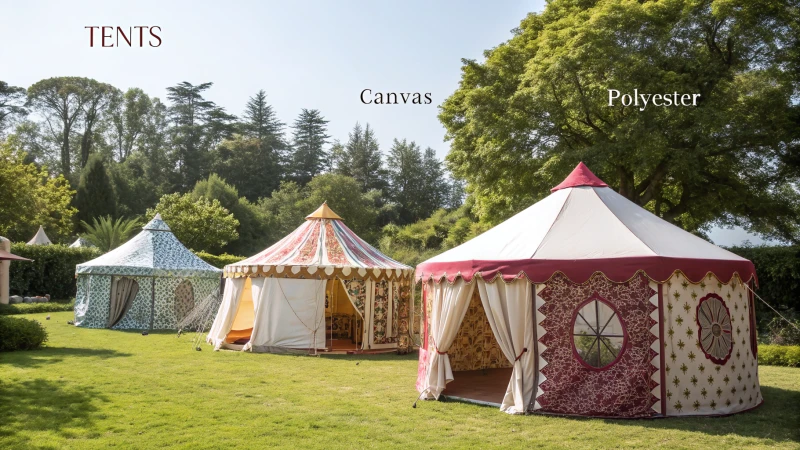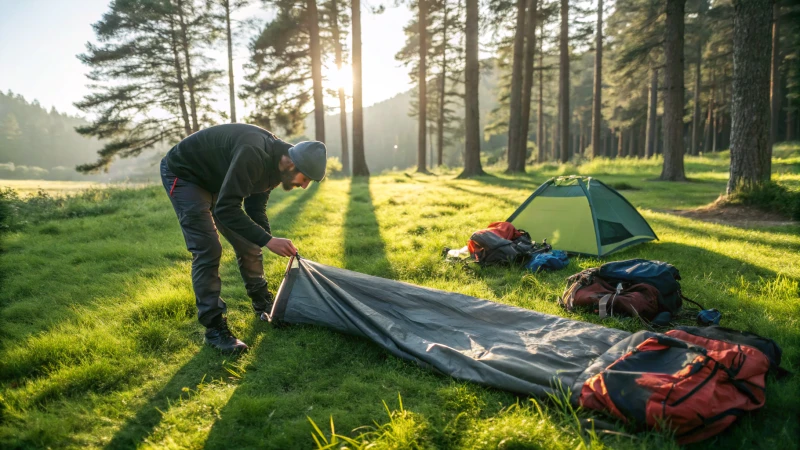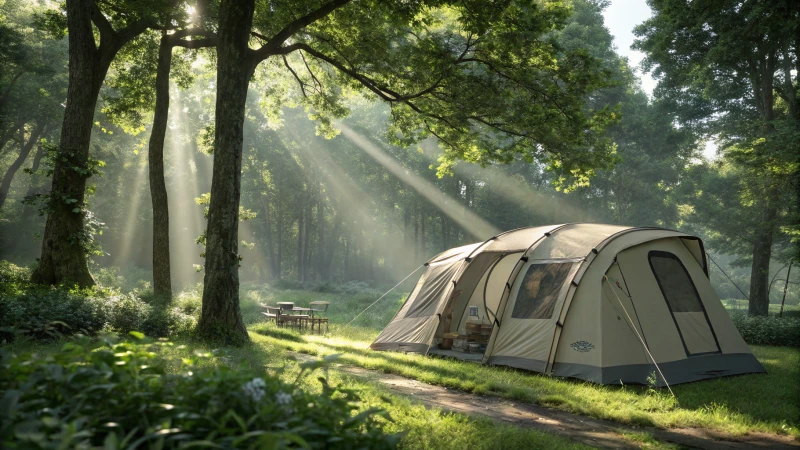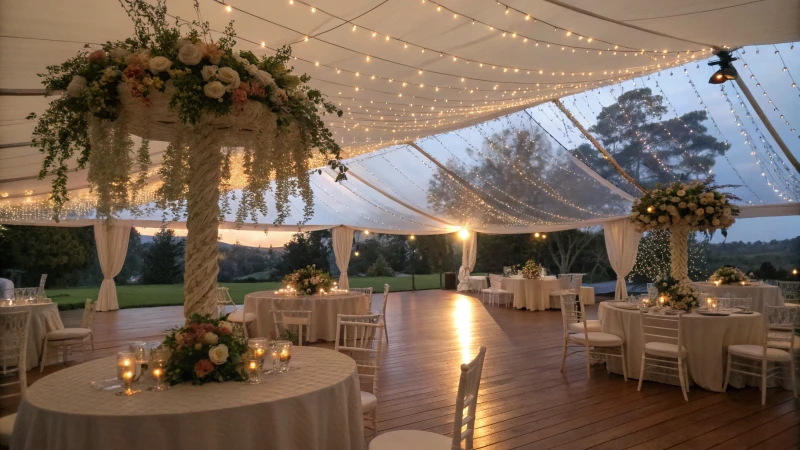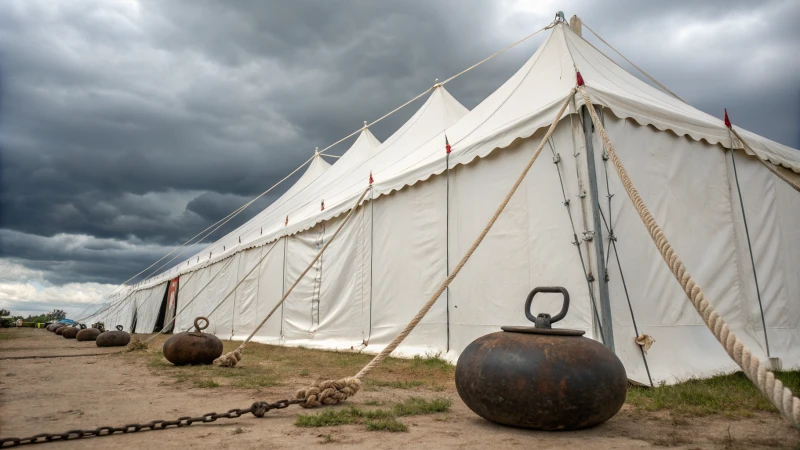
Windy days can turn a party into a whirlwind of chaos if your marquee isn’t secured properly. Trust me, I’ve been there!
To secure a marquee in windy conditions, anchor it firmly with cast iron leg weights, keep the sides on for wind resistance, and adjust based on wind speed and marquee size.
Once, while setting up for an outdoor wedding, I learned firsthand how crucial it is to prepare for unpredictable weather. We barely finished setting up when the wind began to pick up. Thankfully, we had taken the time to anchor the marquee with hefty leg weights and ensured all sides were securely in place. It was that day I realized how much peace of mind a well-secured tent can bring.
When securing a marquee, consider the terrain and expected wind conditions. Larger tents naturally catch more wind, so heavier weights are essential. Remember, it’s not just about keeping the marquee from taking flight; it’s about ensuring everyone under its canopy stays safe and comfortable. If you’re expecting gusty weather, think of it as an opportunity to double-check every anchor point and reinforce wherever possible. It’s a small step that makes a big difference in the stability of your setup.
Cast iron weights enhance marquee stability.True
Cast iron weights provide a stable base, reducing wind impact.
Leaving marquee sides open increases wind resistance.False
Open sides allow wind to pass through, reducing resistance.
What Are the Best Materials for Marquee Leg Weights?
Imagine the peace of mind knowing your marquee is rock solid, no matter what the weather throws at it. That’s the kind of assurance you need.
The best materials for marquee leg weights are cast iron, concrete, and water-filled barrels. Each offers the stability needed to secure your marquee against unpredictable weather, ensuring a safe and steady setup.
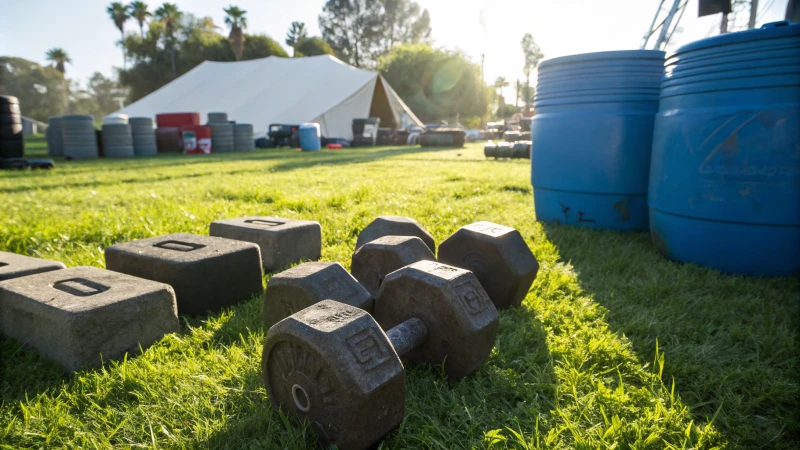
Cast Iron Weights
I remember the first time I used cast iron weights for a marquee event. It was a blustery afternoon, and I was a bit anxious about whether everything would stay put. But those cast iron weights were like anchors, steadfast and reliable. They’re compact yet dense, which means you can stack them up according to the wind conditions1 or the size of your marquee. It’s reassuring to know that they won’t easily budge, even when the wind decides to test your patience.
Concrete Blocks
Concrete blocks remind me of my first DIY project. There’s something satisfying about creating your own custom solution. Many folks love concrete for its sheer density and how customizable it can be. I’ve seen people mold their own custom concrete weights2, which is a testament to both creativity and thriftiness. It’s like building a fortress around your marquee – sturdy and dependable.
Water-Filled Barrels
Then there’s the flexibility of water-filled barrels. I’ve come across these during those times when you need to travel light and set up quickly on-site. You just fill them up when you get there. They’re convenient, especially when moving them around would otherwise be a hassle. Just make sure they’re sealed properly – there’s nothing like a surprise leak to dampen spirits at an event.
Comparison Table
| Material | Advantages | Disadvantages |
|---|---|---|
| Cast Iron | Durable, compact, stackable | Expensive, heavy to transport |
| Concrete Blocks | Customizable, high density | Bulky, less portable |
| Water-Filled | Lightweight when empty, adjustable | Potential leaks, less durable |
Ultimately, choosing the right leg weights is about balancing your event needs – the marquee’s size3, weather predictions, and logistics like setup time and transport. It’s all part of the fun and challenge of planning an outdoor event.
Cast iron weights are stackable for adjustable weight.True
Stackable nature allows adjusting weight based on conditions.
Water-filled barrels are more durable than cast iron.False
Water-filled barrels are less durable due to potential leaks.
How Can I Effectively Anchor a Marquee?
Ever tried setting up a marquee only to have it nearly take flight with the first gust of wind? Let’s ensure that doesn’t happen again.
To effectively anchor a marquee, I use a mix of leg weights, tie-down kits, and stakes. It’s all about matching these tools with the marquee’s size, expected wind speeds, and the surface type to keep everything securely grounded.
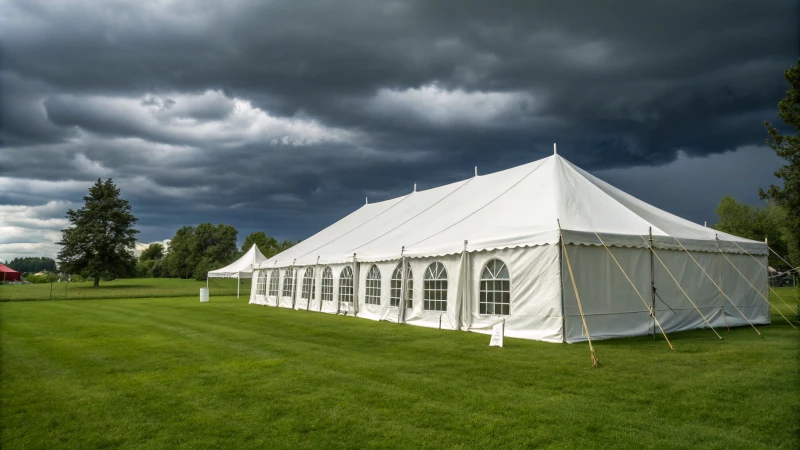
Understanding the Importance of Proper Anchoring
Setting up a marquee4 always reminds me of building a fortress—secure and steadfast. I learned early on that anchoring is not just about keeping the structure in place; it’s about ensuring the safety of everyone around. Leg weights are my go-to for foundational support, while tie-down kits add that extra layer of security.
Factors to Consider
- Marquee Size: When I deal with larger marquees, I know they require more anchoring due to their increased surface area. This often means using more leg weights and sometimes opting for stronger stakes.
- Wind Conditions: In my experience, for wind speeds up to 50mph, weighting each leg with at least 15kg is crucial. If the winds pick up, sometimes it’s better to remove the roof covers while keeping the frame anchored.
- Surface Type: Setting up on soft ground allows me to use pegs and stakes effectively, but on hard surfaces, I rely more on weights and sandbags.
Techniques for Effective Anchoring
| Method | Description | Advantages |
|---|---|---|
| Leg Weights | Weights placed over the marquee legs. | Easy to install and move. |
| Tie-Down Kits | Ropes and straps that secure the marquee to stakes. | Provides extra stability. |
| Stakes | Driven into the ground, ideal for soft terrain. | Strong anchoring method. |
Combining these methods has saved me countless times from unexpected gusts trying to lift my setup away.
Additional Considerations
- Side Panels: I’ve found that keeping sides on reduces wind impact significantly. Removing sides can turn the marquee into a sail-like structure.
- Access Points: I always position access points on sides not directly facing the wind to prevent gusts from affecting the internal setup.
- Weather Forecasting: Checking forecasts has become second nature to me, ensuring I’m prepared to adjust my setup accordingly.
By understanding these factors and techniques, I’ve been able to create safer event environments where marquees stand strong and secure.
Leg weights alone can secure a marquee in high winds.False
Leg weights need to be combined with tie-down kits for stability.
Marquee side panels reduce wind impact significantly.True
Side panels help prevent the marquee from becoming sail-like in wind.
What Are Common Mistakes in Marquee Setup During Windy Weather?
I remember the first time I set up a marquee in a windy field—it was a learning experience full of flying tarps and wobbly poles! Here’s how to avoid those rookie mistakes.
The most common mistakes when setting up a marquee in windy weather include not securing it properly, using insufficient leg weights, and poor positioning against the wind. Avoid these pitfalls by ensuring a robust setup to protect your event and guests.
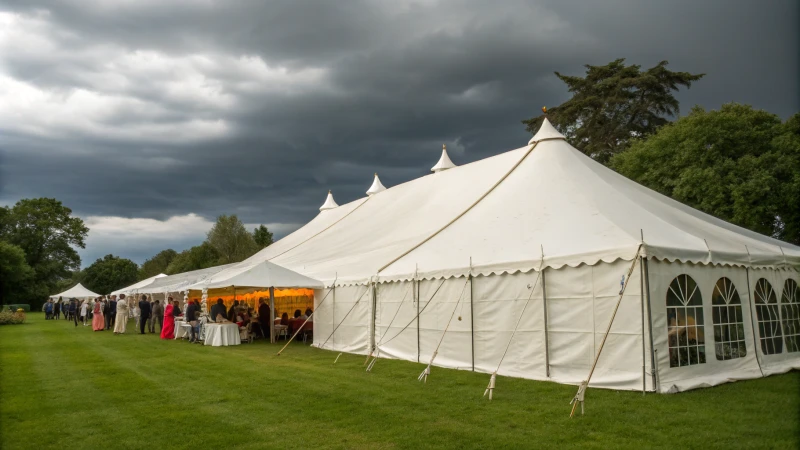
Neglecting Adequate Anchoring
I can still recall that moment when I watched helplessly as our marquee almost took off like a kite. It taught me the hard way that proper anchoring is non-negotiable, especially when the wind decides to gate-crash your event. Trust me, using extra stakes and tie-down kits isn’t just good advice—it’s essential.
Here’s a handy comparison of anchoring options I’ve tried:
| Anchoring Method | Pros | Cons |
|---|---|---|
| Tie-Down Kits | Easy to use | May not hold in extreme wind |
| Stakes & Ground Bars | Excellent stability | Requires solid ground |
| Building Anchors | Maximum security | Limited to available structures |
Underestimating Leg Weight Requirements
Underweighting was another mistake I once made, assuming that a few kilos here and there would do the trick. If you don’t want your marquee to dance away with the breeze, you need to calculate the leg weights based on the marquee size and expected wind speed. It’s like trying to keep a stubborn pet on a leash without enough treats!
Weight Recommendations:
- For light winds: 15kg per leg
- For moderate winds: 25kg per leg
- For strong winds: 35kg per leg or more
Incorrect Positioning Against the Wind
Positioning can make or break your setup. I once believed that taking off the sidewalls would help reduce pressure. Big mistake! It’s like turning your marquee into a giant sailboat. Instead, keep those sidewalls on and minimize openings to withstand those gusts.
Importance of Proper Planning
Planning ahead is your best bet against surprises. Checking the weather forecast might save you from an unexpected stormy showdown. And if strong winds are predicted, investing in a wind-resistant design could be a game-changer.
For more insights on marquee wind resistance5, feel free to explore our detailed resources.
Neglecting adequate anchoring is a common mistake in windy weather.True
Proper anchoring prevents the marquee from being blown away by wind.
Removing sidewalls reduces wind pressure on the marquee.False
Removing sidewalls can increase lifting risk, acting like an umbrella.
When Should You Consider Taking Down a Marquee?
Picture this: the wind picks up, and suddenly, your marquee threatens to become an oversized kite. Knowing when to take it down can save your event—and maybe even a few lives.
It’s crucial to dismantle a marquee when weather forecasts predict winds that exceed the tent’s rated capacity or during severe storms. This proactive step prevents damage and ensures everyone’s safety.
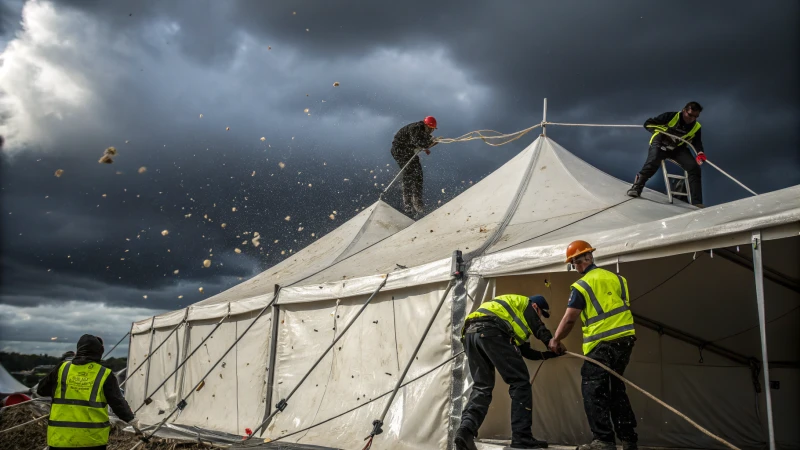
Evaluating Weather Conditions
I remember this one time when the weather app was my best friend. It was a big family reunion, and we had set up this beautiful marquee in the backyard. But then, those pesky little storm icons popped up on my phone screen. It wasn’t just any storm—it was going to be a big one, with winds that could send the whole setup flying like Dorothy’s house in "The Wizard of Oz." That’s when I knew: better safe than sorry.
Weather is a tricky beast, and marquees, while charming, aren’t exactly built to withstand a hurricane. Most are rated for specific wind speeds. Check your marquee’s capacity, and if the forecast exceeds that—believe me, I’ve learned this the hard way—take it down before things get wild.
Wind Speed Tolerance Table:
| Marquee Type | Max Wind Speed | Recommendation |
|---|---|---|
| Standard Event Tent | 50 mph | Dismantle above 50 mph |
| Industrial Tent | 70 mph | Monitor closely above 60 mph |
In addition to wind, heavy rain can lead to water pooling on the roof, potentially causing collapse if the structure is not designed for such conditions.
Assessing Security Measures
Security isn’t just for your event guests—it’s vital for your marquee too. I once thought that loosening a few panels might let the breeze pass through more easily. Big mistake! It nearly turned into a sailboat without the water.
Proper anchoring6 is like a good insurance policy. Make sure those leg weights are heavy enough—at least 15kg per leg, depending on your marquee’s size. And remember, taking sides off just turns it into a giant umbrella. Keep it snug and secure with all sides on.
Accessibility and Safety Concerns
Safety first! If your marquee is tucked away in a spot that’s hard to reach or near high-traffic areas, you have to think ahead. Emergency services need access, and if there’s any chance of falling debris—like from trees nearby—it’s best to play it safe.
I’ve seen setups near buildings where branches could snap off during strong winds. Trust me, assessing the surroundings before making any decisions is crucial.
If all else fails and you can’t take down the whole marquee in time, at least strip it to its bones—remove all covers and secure the framework. It’s not perfect but it’s better than an impromptu flight lesson.
Marquees should be dismantled above 50 mph winds.True
Standard event tents are rated to withstand up to 50 mph winds.
Removing side panels reduces wind risk for marquees.False
Removing side panels increases wind risk by turning the marquee into a sail.
Conclusion
To secure a marquee in windy conditions, use cast iron weights, keep sides on for wind resistance, and adjust based on wind speed and marquee size for safety.
-
Understanding wind conditions helps in choosing the right amount of weight needed for your marquee. ↩
-
Explore DIY options for creating custom concrete weights to save costs. ↩
-
Learn how different marquee sizes influence the amount of leg weight needed for stability. ↩
-
Explore why securing a marquee is essential for safety, especially during adverse weather conditions. ↩
-
Understand what makes a tent wind-resistant and how to choose the right design for your needs. ↩
-
Learn about effective methods for securing marquees against strong winds. ↩


